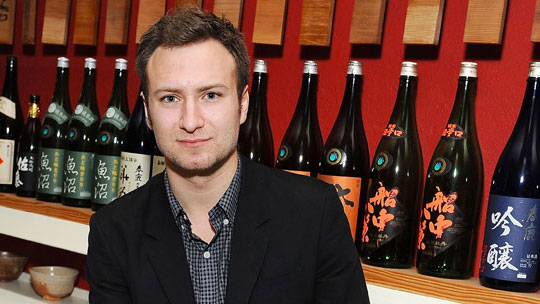Jiro Dreams of Sushi may ultimately prove a “small” film that served as a stepping stone in director David Gelb’s career, but just as the size of chef Jiro Ino’s tiny 10-seat (but three Michelin star) restaurant belies the magic food so lovingly prepared there, so too might the deceptively gentle scope of Gelb’s documentary. The film is “a dream, indeed,” wrote Keith Uhlich in TimeOut New York. “Sure to delight foodies and cinephiles alike.”
We checked in with Gelb on the heels of the PBS premiere to learn more about what drew him to make a film about this sushi master.
As a fan of sushi, how did you first discover chef Jiro? And what led you to believe in him as a subject for your film?
At first my intention was to make a film about a number of different sushi chefs, which would have been a broader film about sushi as an art. I made short films about other chefs, such as the brilliant Nozawa in California. However, after I ate at Sukiyabashi Jiro in Japan, I realized that Jiro himself would be the ideal subject for the film. Everything I wanted to convey about sushi could be effectively told from his perspective. I was also very moved by his personal story, philosophy, and family story. I realized that there was an opportunity here to make a film about so much more than sushi. Sushi is the setting, but the film is driven by the character.
How did you gain Jiro’s trust?
I owe a lot to food critic Masuhiro Yamamoto for connection me with Jiro. And once production started I tried to keep my presence discreet. For the first couple days I didn’t even bring my camera with me.
Did you watch any other films about food to prepare and inspire the making of your own film?
I didn’t really watch other food movies, but I watched a lot of other documentaries. I watched the Planet Earth series from the BBC, which I found inspiring for its style and cinematic treatment. I also took a lot of influence from Fog of War by Errol Morris and The King of Kong by Seth Gordon, as well as numerous other documentaries featuring fantastic characters.
Was it a challenge to film in what is by all accounts a rather tiny restaurant?
The top priority for me was to film without getting in their way and being a bother. The size of the restaurant was an inherent problem on that front, as you have 5 chefs in the kitchen working and I’m 6 feet tall with a bunch of camera gear. I started with a very small camera and as I got used to the space and an understanding on how they move around the kitchen and in the restaurant I was able to get in there with larger equipment and still stay out of the way. Jiro and his team were incredibly patient with me.
How did you decide (and get) to use Philip Glass’s music to form the hypnotic score for your film?
As I mentioned before, I love the work of Errol Morris, and Philip Glass composed music for several of his films, including my two favorite documentaries (Fog of War and The Thin Blue Line). I began playing with Philip Glass music over my footage and would listen to it a lot as I wandered around Tokyo. There is a certain pulse to his music that just feels inspiring. The editor and I began to realize that the driving, repetitive nature of Glass’s music is a perfect metaphor for Jiro’s work ethic. The music repeats but escalates and builds. Jiro repeats the same process every day but is always looking for that baby step forward. It just works.
What’s your favorite sushi item? (And where’d you have it, if you have a favorite spot.)
The sardine (iwashi) and eel (anago) at Jiro’s restaurant remain my favorites.
(By the way, the scenes of the sushi were shot after hours, so I “had” to eat that sushi.)
What are you working on now or next?
I’m now in post production on a sci-fi horror film entitled Lazarus, starring Olivia Wilde and Mark Duplass. I’ve always loved horror movies and so that has been a lot of fun. I’m also starting production on a new documentary feature project as well as a documentary series involving chefs.
